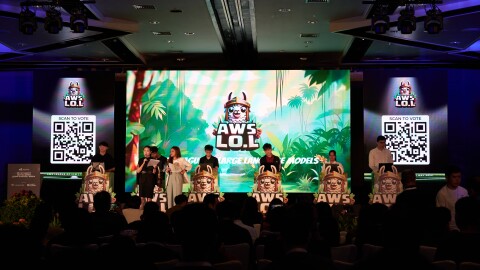Postman.gov.sg, a mass messaging tool that allows public officers to quickly send messages to citizens by using the Gov.sg WhatsApp account, has sent over 1 billion messages, including COVID-19 updates. Singaporeans also used RedeemSG — a voucher system and redemption tracking tool used to distribute over 11 million face masks to Singapore residents.
The genesis of these applications, and many others, are from the annual Hack for Public Good hackathon. Organized by the experimental tech division in the government called Open Government Products (OGP) that aims to build technology for public good, the month-long event takes a citizen-centric approach, empowering technology teams consisting of co-hackers from the public and private sectors to go into the community and to discover community problems, and brainstorm and build ways to solve them.

In January every year, participants spend the month conducting research and generating new product ideas for working prototypes that will be showcased at the finale at the end of the month. As part of their discovery process, they conduct learning journeys within the community, and attend sharing sessions with public officers to understand the sentiment on the ground. The objective of this exercise is to align their solutions to actual user experiences, and deliver public good. The participants also have the opportunity to learn and develop their skills as they build new products.
AWS powers Hack for Public Good
This year, 39 co-hackers submitted 60 product ideas, and built 21 prototypes with the support of the AWS Cloud Innovation Centre in Singapore. AWS provided Cloud immersion sessions for the co-hackers to learn about AWS’s technologies and services that can help build their solutions. They were also invited to learn about Amazon’s “Working Backwards” process, which involves approaching a challenge with the outcome in mind, so that co-hackers could apply this approach to their process.

Innovating with AWS technologies
Throughout the event, AWS technologies were weaved into the prototypes. A total of 11 project accounts and nine personal experimentation AWS accounts were created to facilitate the competition. One project, CloudCity, proposes the use of AWS to organise resources, improve security, transparency and governance without limiting engineering freedom in the public sector. Other Hack for Public Good projects employed AWS as part of their tech stacks to hack engineering solutions such as:
- QuizSG - A no-code tool for public officers to easily create and administer quizzes which learners can take by simply accessing a weblink
- PetitionsSG - a government platform for citizens to push for change that matters, connecting the most important sentiments from the ground to ministries
- Meet?Meet - a fast and easy way to find a common time for a meeting across multiple individuals, departments, and agencies
- DocuLens - allows government officers to easily receive and view applications for grants and schemes that require many supporting documents
- Spotlight - provides a safe space for public officers to surface the tech problems they face at work and seek solutions within the WOG community
- Data Buddy - A no-code tool that allows you to turn transactional data into workflow apps in minutes
According to OGP’s engineering manager Liang Yuanruo, adopting AWS for various Hack for Public Good prototypes was a great user experience as “AWS’s governance features, such as AWS Control Tower, greatly reduced bureaucratic friction, and enabled teams to dedicate more time product development instead of seeking finance approvals.”
A culture of openness and experimentation
Expanding on OGP’s culture of openness and experimentation, product demonstrations and presentations were livestreamed to members of the public and public officers during the finale. This provided an avenue for attendees to ask questions, share their feedback, and vote for products under categories such as “the most Singaporean product” that demonstrated local relevance and embodied the Singaporean culture. Such two-way engagements ensure that OGP remains in touch with the challenges faced on the ground and can make relevant enhancements when converting some of these prototypes into full-fledged products.
Gaurav Chandrashekar, product manager at Paypal who joined Hack for Public Good with his colleagues, reflected on his journey: “Each hacker brought such a positive energy and enthusiasm to everything they did as they believed they were there to make a difference. This was evident in their customer-centric approach to consulting with relevant government agencies and end users to ensure their product resonated with all stakeholders. All the hackers were open to sharing and listening to constructive feedback from multi-disciplinary teams, creating an atmosphere that allowed builders to be creative and innovate.”
For Sarah Espaldon, Head of Marketing and Operations at OGP, it was an opportunity to work on a passion project. “Hack for Public Good not only provided me with an opportunity to work on a local tourism project, I also learnt a great deal from challenges faced by agencies like the Singapore Tourism Board, considerations from users through project discussions with my team, and how to work backwards from the customers’ challenges from the AWS “Working Backwards” workshop.”
Developing for the future
While this year’s Hack for Public Good has concluded, the mission to build technology for public good continues. Discussions are now taking place to identify potential prototypes that can be developed further into full-fledged products, with various AWS technologies supporting the tech stacks used for OGP’s product development.
Find out more about the full list of Hack for Public Good projects and how AWS technologies are embedded into these solutions here.














